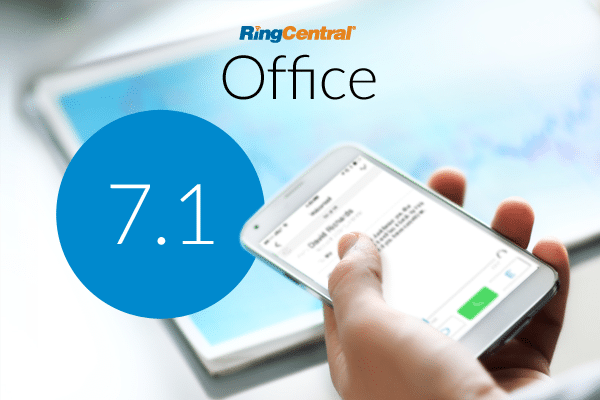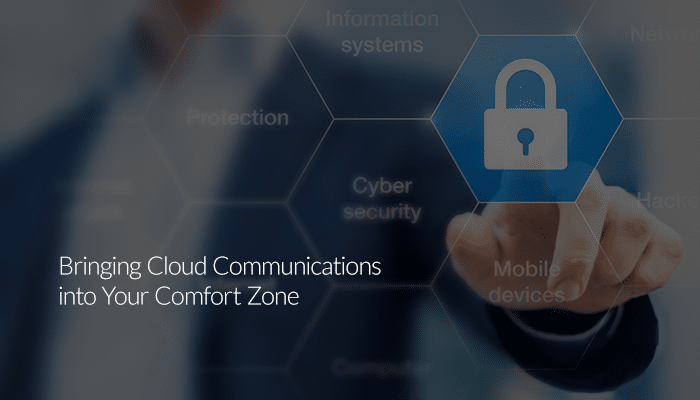Highlights:
- A hybrid work environment creates additional challenges regarding data security for financial services organizations.
- Regulatory requirements for securing financial services data are stringent and ever-evolving.
- A communications platform with advanced security features can help financial services organizations to meet regulatory requirements and ensure financial data is secure.
👀 Did you know that cloud adoption is growing within the financial services sector? Grab our eBook to get the whole story.
With a more remote, digitally connected workforce, financial services providers have a greater volume of sensitive communication and data moving between locations. This scenario creates a heightened need for advanced security because there are more data delivery and access points compared to a centralized office.
Each employee working remotely has hardware, software, and internet connections that create risks. Thus, security requirements are more comprehensive and involve greater investment.
Security challenges posed by hybrid work environments
The following is a look at security challenges posed by hybrid work environments, along with strategies for mitigating the risks.
Incoming and outgoing communications
File-sharing, email exchanges, and messages are among incoming and outgoing transmissions that require effective security protocols. If your business has an Intranet or other portals used to share files among team members, you need solutions that safeguard the files from hackers.
Finances are one of the most private aspects of a person’s life. Emails and messages between team members, and between an agent and customer, often contain sensitive information. Some providers have changed or eliminated digital communication tools during the pandemic.
Phishing and scams
Cyber hackers see a dispersed workforce as a prime opportunity to facilitate scams. In particular, banks are one of the top targets for phishing and ransomware, according to Forbes.
Phishing involves sending fake emails to people in an effort to get the recipient to click on a link and share private information or download a malicious file. The objectives are to either get confidential information directly or to place ransomware on the device that allows the hacker access to confidential files and data.
These types of scams produce the theft of large amounts of private consumer data that is then used or sold on the dark web.

Meeting regulatory requirements
The government also has an interest in the safety and security of a hybrid workplace in the financial sector. Financial regulatory bodies recognize the increased risks of cybercrime that come with flexible work locations.
This industry workforce transformation comes at a time when the government is beefing up regulations around cybersecurity and identity verification. In essence, financial service employees must ask for more personal identifiers from customers at a time when the potential for exposure to hackers is heightened.
Banks also face much greater oversight of their data handling than typical industries. They are required to submit periodic reports on the types of data collected and stored, along with information on security measures used to safeguard data handling. Regulations are in flux due to the rapid shifts in industry operations, so providers must adapt to policy changes.
Employee trust and accountability
A hybrid work structure puts more of the onus for ensuring security on employees. Thus, providers have to put a lot of faith in team members to maintain secure connections from work locations. A totally secure connection includes hardware and software architecture, along with safe internet pathways, such as a private wireless network.
If employees take laptops and other equipment between work locations, they have increased responsibility to ensure the equipment is stored safely. Files stored on a computer hard drive or USB device are at risk if left unattended in a public location, in a vehicle, or in another accessible place.

Strategies for optimizing security
There are a number of security measures banks can employ to mitigate risks. The following are some of the most critical steps to take:
Implement an advanced security architecture
Firewalls are common in a centralized workplace. For remote workers, you need proxy servers and virtual private networks. Advanced encryption protects data shared among team members in different locations. Identity verification certificates ensure only authorized users can log on to a business computer or into a worker’s account.
Manage devices
With laptops, tablets, and smartphones moving around with workers, there are several steps to effective device management. First, use good inventory management to keep track of which employees hold which equipment. Keep a regular schedule for software updates, including anti-virus protection. Ensure that employees using their own devices at home or elsewhere have proper security software and patches installed and understand safety requirements.
Provide training
Given the amount of trust placed in the hands of employees, it is important to offer thorough training. Phishing scams are among the most important topics to cover. Teach employees about the types of messages hackers send, the clues to scams, and how to avoid the actions that lead to ransomware downloads. Continuously reinforce training on critical topics.
Use secure cloud storage
Storing data securely in the cloud reduces risks of file and data theft because you don’t have these items stored on hard drives.
Conduct routine security audits
Don’t take security for granted. Have a regular schedule for conducting cybersecurity audits. This step is important for meeting regulatory requirements and data compliance standards as well.
Force strong password resets
Regular password resets are an additional safety measure that makes it harder for hackers to capture and use employee logins. Forcing periodic changes, such as every 90 days, is a good practice. A strong password should include a mix of letters and symbols, and should not contain common words.

RingCentral provides secure communications for financial services
Security is as critical in financial services as it is in any industry. Banks handle a lot of data, which requires a massive technology infrastructure. There is also a lot of internal communication and interactions with customers that require secure communication pathways.
To enable optimized communication among employees working in various locations, you need a solution that is comprehensive and secure.
RingCentral’s cloud-based communication platform features seven layers of security to provide financial services organizations with confidence. The platform:
- Offers support for FINRA-regulated customer compliance requirements
- Provides TLS and SRTP encryption between all endpoints
- Is rated Enterprise-Ready, Skyhigh’s CloudTrust™ highest rating
- Is HITRUST-CSF Certified
- PCI DSS Compliant (Payment Card Industry Data Security Standard)
Reach out to RingCentral today for a demo of its industry-leading platform for financial services and see how it works.
Originally published Feb 10, 2022, updated Nov 03, 2023





